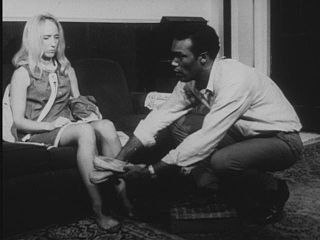Related Research Articles
Racism is discrimination and prejudice against people based on their race or ethnicity. Racism can be present in social actions, practices, or political systems that support the expression of prejudice or aversion in discriminatory practices. The ideology underlying racist practices often assumes that humans can be subdivided into distinct groups that are different in their social behavior and innate capacities and that can be ranked as inferior or superior. Racist ideology can become manifest in many aspects of social life. Associated social actions may include nativism, xenophobia, otherness, segregation, hierarchical ranking, supremacism, and related social phenomena.
Heterosexism is a system of attitudes, bias, and discrimination in favor of heterosexuality and heterosexual relationships. According to Elizabeth Cramer, it can include the belief that all people are or should be heterosexual and that heterosexual relationships are the only norm and therefore superior.
Racial color blindness refers to the belief that a person's race or ethnicity should not influence their legal or social treatment in society.
The term "person of color" is primarily used to describe any person who is not considered "white". In its current meaning, the term originated in, and is primarily associated with, the United States; however, since the 2010s, it has been adopted elsewhere in the Anglosphere, including relatively limited usage in the United Kingdom, Canada, Australia, Ireland, South Africa, and Singapore.
In social justice theory, internalized oppression is a recognized understanding in which an oppressed group accepts the methods and incorporates the oppressive message of the oppressing group against their own best interest. Rosenwasser (2002) defines it as believing, adopting, accepting, and incorporating the negative beliefs provided by the oppressor as the truth.
White privilege, or white skin privilege, is the societal privilege that benefits white people over non-white people in some societies, particularly if they are otherwise under the same social, political, or economic circumstances. With roots in European colonialism and imperialism, and the Atlantic slave trade, white privilege has developed in circumstances that have broadly sought to protect white racial privileges, various national citizenships, and other rights or special benefits.
Covert racism is a form of racial discrimination that is disguised and subtle, rather than public or obvious. Concealed in the fabric of society, covert racism discriminates against individuals through often evasive or seemingly passive methods. Covert, racially biased decisions are often hidden or rationalized with an explanation that society is more willing to accept. These racial biases cause a variety of problems that work to empower the suppressors while diminishing the rights and powers of the oppressed. Covert racism often works subliminally, and much of the discrimination is done subconsciously.
Social exclusion or social marginalisation is the social disadvantage and relegation to the fringe of society. It is a term that has been used widely in Europe and was first used in France in the late 20th century. In the EU context, the European Commission defines it as "a situation whereby a person is prevented from contributing to and benefiting from economic and social progress". It is used across disciplines including education, sociology, psychology, healthcare, politics and economics.
Internalized racism is a form of internalized oppression, defined by sociologist Karen D. Pyke as the "internalization of racial oppression by the racially subordinated." In her study The Psychology of Racism, Robin Nicole Johnson emphasizes that internalized racism involves both "conscious and unconscious acceptance of a racial hierarchy in which whites are consistently ranked above people of color." These definitions encompass a wide range of instances, including, but not limited to, belief in negative stereotypes, adaptations to white cultural standards, and thinking that supports the status quo.
Microaggression is a term used for commonplace verbal, behavioral or environmental slights, whether intentional or unintentional, that communicate hostile, derogatory, or negative attitudes toward stigmatized or culturally marginalized groups. The term was coined by Harvard University psychiatrist Chester M. Pierce in 1970 to describe insults and dismissals which he regularly witnessed non-black Americans inflicting on African Americans. By the early 21st century, use of the term was applied to the casual disparagement of any socially marginalized group, including LGBT people, poor people, and disabled people. Psychologist Derald Wing Sue defines microaggressions as "brief, everyday exchanges that send denigrating messages to certain individuals because of their group membership". The persons making the comments may be otherwise well-intentioned and unaware of the potential impact of their words.
Laissez-faire racism is closely related to color blindness and covert racism, and is theorised to encompass an ideology that blames minorities for their poorer economic situations, viewing it as the result of cultural inferiority. The term is used largely by scholars of whiteness studies, who argue that laissez-faire racism has tangible consequences even though few would openly claim to be, or even believe they are, laissez-faire racists.
Social privilege is an advantage or entitlement that benefits individuals belonging to certain groups, often to the detriment of others. Privileged groups can be advantaged based on social class, wealth, education, caste, age, height, skin color, physical fitness, nationality, geographic location, cultural differences, ethnic or racial category, gender, gender identity, neurodiversity, physical disability, sexual orientation, religion, and other differentiating factors. Individuals can be privileged in one area, such as education, and not privileged in another area, such as health. The amount of privilege any individual has may change over time, such as when a person becomes disabled, or when a child becomes a young adult.
Respectability politics, or the politics of respectability, is a political strategy wherein members of a marginalized community will consciously abandon or punish controversial aspects of their cultural-political identity as a method of assimilating, achieving social mobility, and gaining the respect of the majority culture. As a sociological term, it is often pejorative, typically used in a manner critical of the ideology.

Depictions of race in horror films has been the subject of commentary. Critics have discussed the representation of race in horror films in relation to the presence of racist ideas, stereotypes and tropes within them. The horror genre has conversely also been used to explore social issues including race, particularly following popularization of social thrillers in the 2010s.

Hatharasinghege Michelle Dilhara is a Sri Lankan actress and an Environmentalist. One of the most popular television actresses in Sri Lanka, Dilhara is best known for playing the role of "Ayoma" in the popular television series Sudu Andagena Kalu Awidin Apart from acting, she also engages in various philanthropic activities and is a social activist and an author.
Racial trauma, or race-based traumatic stress, is the cumulative effects of racism on an individual’s mental and physical health. It has been observed in numerous BIPOC communities and people of all ages, including young children. Racial trauma can be experienced vicariously or directly. It has been linked to feelings of anxiety, depression, and suicidal ideation, as well as other physical health issues.
The weathering hypothesis was proposed to account for early health deterioration as a result of cumulative exposure to experiences of social, economic, and political adversity. It is well documented that minority groups and marginalized communities suffer from poorer health outcomes. This may be due to a multitude of stressors including prejudice, social alienation, institutional bias, political oppression, economic exclusion, and racial discrimination. The weathering hypothesis proposes that the cumulative burden of these stressors as individuals age is "weathering," and the increased weathering experienced by minority groups compared to others can account for differences in health outcomes. In recent years, the biological plausibility of the weathering hypothesis has been investigated in studies evaluating the physiological effects of social, environmental and political stressors among marginalized communities. This has led to more widespread use of the weathering hypothesis as a framework for explaining health disparities on the basis of differential exposure to racially based stressors. Researchers have also identified patterns connecting weathering to biological phenomena associated with stress and aging, such as allostatic load, epigenetics, telomere shortening, and accelerated brain aging.
The invisible to visible movement is a solidarity campaign founded by Sri Lankan actress, author, and social activist Michelle Dilhara to minimize the social invisibility and social exclusion of the people affected due to factors such as their educational status, appearance, disability, being in an orphanage, barriers to full participation in employment as senior citizens or anyone who feel marginalized or being invisible in the society. The movement is initiated based on the sociology research and implementations discussed in the book Social Invisibility is not a Fiction it Exists. The main focus of the movement is to regenerate the damaged Social connection by creating a hub as a collaborative platform for communication.
White defensiveness is a term to describe defensive responses by white people to discussions of societal discrimination, structural racism, and white privilege. The term has been applied to characterize the responses of white people to portrayals of the Atlantic slave trade and European colonization, or scholarship on the legacy of those systems in modern society. Academics and historians have identified multiple forms of white defensiveness, including white denial, white diversion, and white fragility, the last of which was popularized by scholar Robin DiAngelo.
Color Blindness is a more contemporary form of ahistorical racism that is epitomized by the phrase, "I do not see color." In essence the term refers to one who places racism squarely in the past.
References
- ↑ Wijerathna, Mandira (2 June 2019). "Social invisibility is not fiction, it exists". Sunday Observer . Sri Lanka. Retrieved 2 June 2019.
- ↑ Dilhara, Michelle (25 May 2019). "Social Invisibility is Not a Fiction, it Exists". Ceylon Today . Retrieved 25 May 2019.
- ↑ Perera, Priyangwada (11 November 2019). "Through the Eyes of a Humanitarian". Ceylon Today . Retrieved 11 November 2019.
- ↑ "The Theory of Alternative Social Cogwheel by Michelle Dilhara". Daily FT . 24 February 2020. Retrieved 24 February 2020.
- ↑ Social Invisibility as Social Breakdown: Insights from a Phenomenology of Self, World, and Other. Stanford University. 2007.
- ↑ Franklin, Anderson; Boyd-Franklin, Nancy (2000). "Invisibility Syndrome: A Clinical Model of the Effects of Racism on African-American Males" (PDF). American Journal of Orthopsychiatry. 70: 33–41. doi:10.1037/h0087691. PMID 10702848. S2CID 21445628.